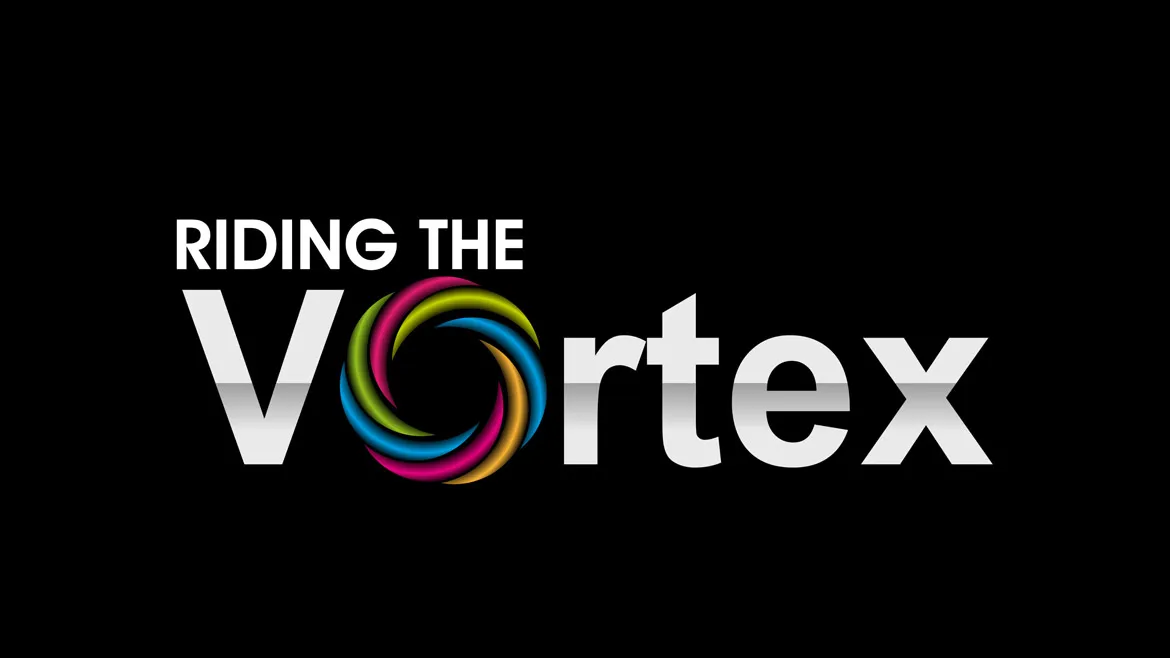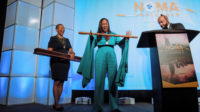Q&A with Riding the Vortex: This Year’s AIA Whitney M. Young Jr. Award Winner
The collaborators discuss supporting Black women in architecture




In 2007, Kathryn Prigmore and the late Barbara Laurie created a session for the annual AIA convention called “Riding the Vortex,” where African American women architects could connect and discuss their experiences in practice. Prigmore, who now teaches at Virginia Tech, had met Laurie when both were professors at Howard University. They enlisted Maryland-based Kathy Dixon, founder of K. Dixon Architecture, and Katherine Williams, editor for the Black Women in Architecture Network and Arch Stories websites, as panelists for that first program. The four women, all trained as architects and based around the Washington metropolitan area, then built on the idea of a forum on race, gender and architecture by continuing Riding the Vortex as an ongoing collective. The next year, they took Vortex to the convention of NOMA (the National Organization of Minority Architects). Melissa Daniel, also a designer, founder of AIA Northern Virginia's Women in Architecture lecture series, and host of the Architecture is Political podcast, began working with the group as Laurie’s mentee in 2009.
Over the years, the group has hosted two dozen panels, featuring speakers in the field, from students to firm owners, virtually or in-person, around the country. At this year’s AIA Conference in Chicago, Vortex won the 50th Whitney M. Young Jr. award, the annual prize named for the distinguished civil rights leader who “challenged the profession to pursue progressive values,” according to the AIA.
Since the founding of Vortex, the number of Black women licensed architects has doubled, but it is still at only 0.4% of all licensed architects.

Riding the Vortex, Thursday panel, with Sabrina Herrell, Kathy Dixon, Melissa R. Daniel, Katherine Williams, Kathie Prigmore (from left to right). Photo courtesy Riding the Vortex
Can you tell me about the initiation of this group?
Kathryn Prigmore: Barbara Laurie was trying to get tenure at Howard University and working to submit her nomination to become a fellow of the AIA. For fellowship, you had to have national recognition; for tenured faculty, your work had to have a broad reach beyond your locality. We came up with this idea to further develop a program she had been working on called 200+ [providing more visibility for the 200-plus Black women architects at the time]. She was doing research on African American women architects, so I suggested that we apply for a program slot in the upcoming AIA national convention. I put together the proposal with her, Kathy Dixon, and Katherine Williams. We did the first presentation at the convention and then it evolved over time.
What are the hallmarks of the program that have remained?
KP: Hallmarks were advancing the presence of African American women architects because it was basically negligible in the profession. And giving opportunities for younger women and those not connected to the establishment to speak, to begin to move things forward and inspire young women architects. Those things have remained.
Katherine Williams: The immediate change is seeing the increase in the numbers of Black women architects and African American architects in general. Also, the connection internationally: with technology, we can connect with Black architects in Europe and Africa. Many of our panelists have gone on to other service-related efforts around supporting Black women. So in mentoring the next generation, we see them now mentoring the third generation.
Who has been a part of these panels?
KP: One is our newest member, Melissa Daniel, who was added to the group after Barbara passed away—Barbara was her mentor. Melissa knew about Vortex while she was in high school, went to architecture school, and has been really active in the AIA at the national level.
Pascale Sablan, who won the Whitney M. Young award last year, was one of our early panelists, as was Tiffany Brown, executive director of NOMA, and Tiara Hughes.
What is a typical panel like?
KP: We ask people to talk about their experiences as an architect—not so much about their built or designed works, but “you as an architect, going through this profession.” We've learned to leave a lot of time for audience participation because there have been sessions with really personal, in-depth recollections—the word has gotten out that we are a safe space to talk and make connections.
What were some defining moments over the years?
Melissa Daniel: What has shocked me is how much of lack of representation there is. I'm from D.C. I'm used to seeing people that look like me all the time—professionals, architects, engineers, designers. So when I heard the stories of these women, I was blown away that they haven't experienced half of the things that I've taken for granted growing up.
Kathy Dixon: That first image we took, with all the women at that second presentation in Boston, was unique. All of us getting in a picture, documenting our being architects together. That was a foundational moment.

Riding the Vortex at AIA National Convention in Boston in 2008. Photo by Steven Lewis, courtesy Riding the Vortex
What’s slated for the NOMA conference in October?
KW: We're actually going to do a session on African American men in the profession, because we've seen women and their numbers increase at a higher rate than men. So, we're doing a panel of guys, ranging from a senior architect firm owner to people earlier in their careers, working towards licensure.
What are some obstacles that you've come up against since formulating this group?
KP: One obstacle is we're all volunteers. It would be nice if somebody could fund us so at least maybe one of us could do this halftime. We have so many things we’d like to do, but we can only fit in so much.
We also encounter bias, people not wanting to have us be a prime element of their events. NOMA, of course, is a place we present every year. But it would be great to present more often in other venues.
What were your reactions to receiving the Whitney Young Award?
KD: We were certainly honored to receive it, especially representing Whitney Young and his message to the AIA and his own historical efforts. We were up against some significant competitors, so that also makes us very proud to have received it.
KP: Obviously I'm proud, but I always feel that as an African American woman, if I have a voice, I need to go beyond just saying thank you, to make sure that some of the issues Vortex is addressing are put before a larger audience. So, I decided to say something a little political that addressed the AIA’s insensitivity to non-white male architects from the organization’s inception. One thing I've learned in the profession is when you have a voice, you need to use it to bring others along.





